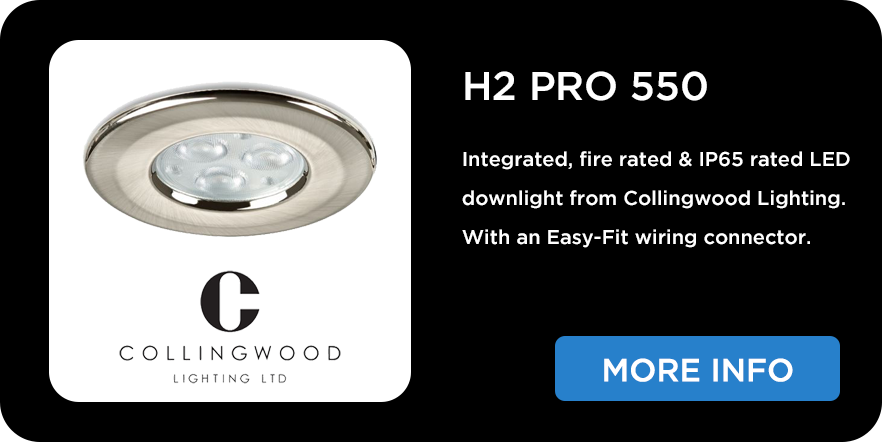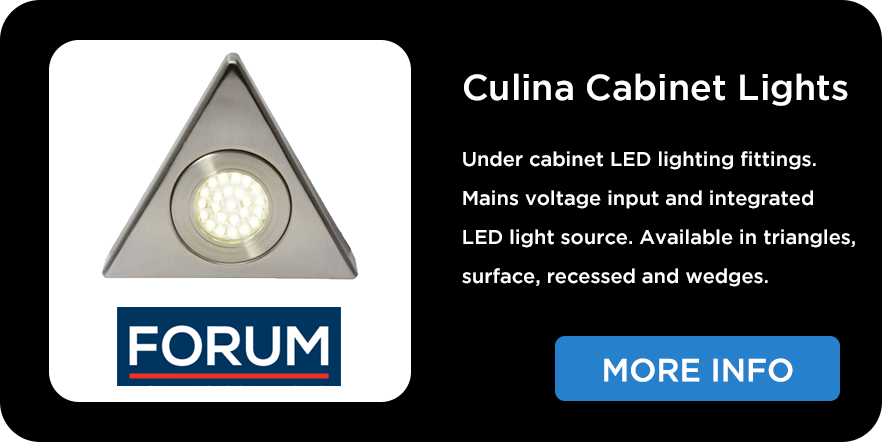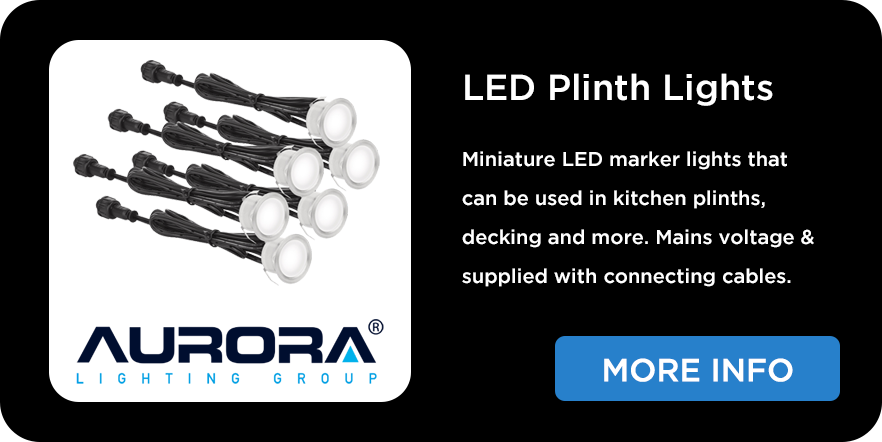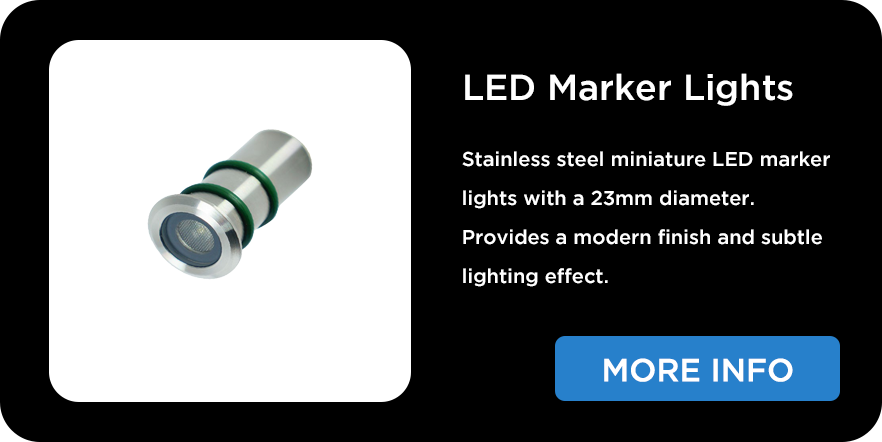Kitchen Lighting Ideas - Tips & Advice On Best Kitchen Lights

Lighting Ideas For Your Kitchen
There is no doubt that the kitchen is one of the most frequently used rooms within the home. From dining and cooking to enjoying a card game with a group of friends, such an environment should embrace a sense of beauty alongside functionality. The overall look and feel of your kitchen is often dependent on the type of lighting you install. Make your kitchen come alive with light!
How are you to make the most out of this important space? What factors do you need to take into account in order to make the best choices? How has the concept of kitchen lighting changed over the years and what new options are available?
These are all very important questions, so let us take a closer look in order for you to make the most appropriate decisions.
A Guide To Lighting Your Kitchen (click the links below)
- Planning Your Kitchen Lighting
- Choosing The Best Kitchen Lights
- The Optimum Lighting Density For Your Kitchen
- How You Can Save Money With LED Kitchen Lighting
- Choosing The Colour Temperature For Your Kitchen
- Choosing The Lighting Style For Your Kitchen
- Putting It All Together: The 3 L's Of Kitchen Lighting
Planning Your Lighting
It is first very important to have a plan in action before the physical process of lighting actually begins. You could otherwise find that the final outcome is less than desirable. One factor which is often overlooked involves the different zones within this room. The two main areas are those involved with food preparation and those concerned with eating. The lighting should be different in each.
Task Lighting In Your Kitchen
Locations such as sinks, cupboards and counters are often associated with brighter lights in order to increase visibility, as it will help you perform tasks much easier than it would do it dim or low levels of lighting.
Mood Lighting For Your Kitchen
On the contrary, the dining area tends to work much better with muted lighting. Low-intensity lighting will set the proper "mood" and provide an extra sense of relaxation to your guests.
Now that we have mentioned this basic concept, it is important to know the types of lights that you have to choose from. Let's take a closer look.
Best Kitchen Lights To Consider
These lights can generally be broken down into several categories; primarily depending upon their design and where they will be placed. Some of the most common fixtures available include (click the links to navigate to each):
- Kitchen downlights
- Kitchen pendant lighting
- Kitchen spotlights
- Kitchen cabinet lighting
- Kitchen plinth lights
Kitchen Downlights
Kitchen downlights are very common options to consider in your kitchen. Sometimes referred to as "recessed ceiling lights", downlights are installed flush within your ceiling, creating a flawless, modern aesthetic to your kitchen. By installing in your ceiling, it helps to provide an all over light coverage perfect for the light levels needed in your kitchen as well as helping you avoid "ugly" hanging wires that you get with other types of lighting.
As our name (www.downlights.co.uk) suggests, we specialise in providing downlights for any room in your home or business and we stock some of most premier lighting brands for the most affordable rates. If you are new to choosing downlights, you'll soon discover that we have a huge amount of different variations to choose from. Check out our FAQs on "What Are The Different Downlight Types" and "GU10 Or Integrated LED Downlights" to start your downlights journey.
Kitchen Pendant Light
Kitchen pendant lighting is often employed above islands or counters, as these fixtures will provide a much less focused sense of illumination. As the name suggests, kitchen island lighting is centered on providing the proper illumination for these stand-alone locations. Pendant lights can be used in combination with recessed downlights to provide the greatest effects. This combination gives you the benefits of a bright consistent light for cooking and more subdued light for eating in.
Dimmable kitchen island lights should be considered as they will give you the added advantage of being able to adjust the brightness in that area. Providing you with the choice of having less light to create a more relaxed, romantic setting, but more light when you need it.
Dimmable kitchen island lights should be considered as they will give you the added advantage of being able to adjust the brightness in that area. Providing you with the choice of having less light to create a more relaxed, romantic setting, but more light when you need it.
Kitchen Spotlights
Much like in any other room of the house, kitchen spotlights will focus their beam in a certain direction. These will help to add a sense of depth within a room and is particularly useful when highlighting key objects within your room. They can be particularly useful within smaller environments, as such lights also provide the illusion of space.
Unlike downlights, which are recessed INTO your ceiling, spotlights are surface mounted ONTO your ceiling. Many people prefer spotlights over downlights as they are much easier to install and don't require you to drill any holes into your ceiling.
Like downlights, spotlights come in a whole array of different styles and technologies, with particular emphasis being placed into the styling of these types of light fittings.
LED spotlights are considered the most energy saving and long lasting type of kitchen spotlight you can buy and you can purchase integrated LED spotlights (i.e. with LED technology built in) or retrofit GU10 LED spotlights, where you buy a separate GU10 LED lamp in addition to the spotlight fixture.
Kitchen Cabinet Lighting
Kitchen cabinet lighting can refer to fixtures placed above or below these units. This option will provide a dramatic sense of depth while also helping to illuminate any work areas. It is not uncommon for owners to use a "layering effect" so that specific rows of lights are able to be controlled by separate switches or dimmable under cabinet lights can be incorporated. Thus, the mood of the room can be quickly adjusted when necessary.
LED strip lights are another variation of under kitchen cabinet light fixture that are proving popular with our customers. That's because they are incredibly easy to install and can be supplied in any of the standard colour temperatures as well as a selection of RGB colour changing versions. These unique and functional lights are perfect for impressing your friends and family with.
Kitchen Plinth Lights
Kitchen plinth lights are our final category. This scheme is generally used to accent a specific portion of the room such as the border of an island or the periphery of a set of cabinets. These unique additions provide a bespoke sense of ambiance and they may even allow some pieces to appear as if they are "floating". As you may have guessed, typical plinth lights can be purchased in strips or as smaller LED marker lights and they are available in a wide range of colours and styles.
The Question of Lighting Density
One challenging question revolves around determining the correct number of lights present within a kitchen. As a general rule of thumb, most experts agree that one fixture per square metre is sufficient to provide an ample amount of lux (lumens per square metre). However, there can be other variables to address. These may include:
- The existing colour scheme of the room (light versus dark).
- The size of the kitchen. When illuminating kitchens you should consider the overall floor space rather than ceiling area as your kitchen cupboards can take up a lot of space.
- The reflectivity of tables, counters and other surfaces. If you have darker coloured cupboards, the light won’t reflect from them and will get lost within them. Darker finishes absorb light, while lighter finishes reflect it back into the room.
- Beam angles. If your kitchen is relatively small (under 9 metres square) then you’d be better off with a relatively narrow bean angle of no more than 40 degrees especially if you’ve got darker kitchen cabinets otherwise you’ll lose some of the light within the surfaces. For more information on beam angles, read our beam angle guide here.
In rooms with lighter tones and a greater amount of reflectivity, you might not require as many lights. Darker environments or those which employ a natural wood cabinets and tables could instead need slightly more fixtures in order to provide a functional amount of luminosity.
It might therefore be wise to adopt a more flexible approach. Many owners prefer to install a dedicated switch to control specific areas of the kitchen. Downlights, plinths and pendant lights can all be placed on a separate circuit. It is therefore possible to adjust the settings based upon the mood and the time of day. A second option is to add a dimmer switch. These switches will adjust the intensity of the lights, so you will once again be able to control their output.
Click here to view switches and sockets for your kitchen
However, we should keep in mind that not all fixtures have this ability especially certain integrated LED lights. Check beforehand so that the correct product is purchased for your needs. If you’re installing low energy LED lighting, you’ll need an LED compatible dimmer switch otherwise your lights may flicker.
For more information on how many downlights you should install in your kitchen, read our full guide: https://www.downlights.co.uk/faq-how-many-downlights-do-i-need-for-my-kitchen-.html
LED Kitchen Lighting: Longer Lasting & Helps You Save Money
Before we move on to design considerations, we need to look at the impact of LED lighting options within the modern home. LED lights offer several unique benefits. These include:
- Massively reduced energy costs over time.
- A long lifespan when compared to incandescent or fluorescent variants.
- Less heat generation.
- Crisper light.
- A wide array of styles and colours.
So, it should be clear to see why LED kitchen lighting is proving to be such a popular alternative to traditional solutions. These lights are generally easy to install and as technology has advanced, their prices have dropped significantly in recent years.
Here at Downlights.co.uk, we have a huge range of LED kitchen lighting including products from premium brands such as Aurora Lighting and Forum to name but a few.
Kitchen Colour Temperature: Making the Right Choice

You might be surprised to learn that temperature plays an important role in regards to the colour of your LED lights. Most specialists measure this temperature in degrees Kelvin (ºK). Lower temperatures are associated with orange, yellow and red wavelengths. These are chosen by those who want to achieve a "warmer" effect such as a sunrise or candlelight. In comparison, a traditional halogen or incandescent light has a warm white effect, similar to 2700K.
Middle-range temperatures give off the appearance of the midday sun or overcast conditions. These values tend to range between 5000K and 7000K. Temperatures as high as 12000K are associated with a light blue sky; ideal if you're looking for an open-air appearance within your kitchen. LED lights are able to offer a true kaleidoscope of colour options, so your choices are nearly limitless.
The most popular choice of colour temperature is warm white 3000K. This provides a clear, crisp lighting effect that isn’t too clinical and not as orange as a halogen.
Or cool white 4000K is the second most popular choice as it offers a more modern, whiter lighting effect. This colour temperature is widely used in supermarkets are warehouses as it slightly brighter and more energy efficient. This is because it has less phosphor over the LED chip. Used incorrectly, like in a living room for example, it can make a home appear too white and unwelcoming. Click on the image below to view our detailed guide about colour temperature.
Choosing Your Desired Kitchen Lighting Style
Luminosity aside, we also need to recall that the type of lighting chosen should always reflect the inherent style of your kitchen. For example, those who are trying to achieve a minimalistic appearance will often choose recessed overhead fixtures, as these will not impede upon the open "feel" of the room.
More traditional environments will frequently employ chandeliers or pendant lights, as they exude a sense of inviting warmth. Strip lighting (such as the plinth variants mentioned earlier) convey a modern and streamlined ambiance.
We should also take into account the size of the kitchen in question. In many ways, the type of lighting chosen can make or break this room.
Smaller spaces should always try to employ fixtures which are less obtrusive. In this case, LED kitchen ceiling lights can be excellent options. They will bathe the environment in a scintillating glow and cast only a minimal number of shadows. This is particularly relevant if there are not many windows present within the room. It is best to avoid any fixtures which will detract from the space itself, so a minimalist approach is generally the best option.
Outward Designs
Modern kitchen fixtures offer much more than luminosity alone. They are able to convey a unique sense of personality to the viewer through the designs which can be incorporated. In other words, you should place a good amount of thought into the specific shape and style of your lights.
There are obviously numerous options to consider during the buying process. For example, finishes such as chrome or stainless steel will be able to pick up and reflect ambient light; perfect to add a touch of class into the modern kitchen. Other variants including copper, brass or brushed metal may be better options if you are looking to espouse a more traditional or rustic appeal.
Another point to mention here is that it can be a good idea to coordinate the styles of lights so that they will help to tie the entire room together. Similar themes and colour schemes will achieve this goal with only a minimal amount of effort. This is also a great way to maintain the visual balance of your kitchen.
Small Accents to Make Big Differences
It is often the smallest of additions that can have the most pronounced impacts within a kitchen. Previous examples include under-cabinet lighting and plinth strips. Another interesting idea is to utilise what are known as toe-kick lights.
These are LED fittings found directly under the bottom portion of a cabinet or kitchen island. They can be positioned at just a few centimetres from the ground. The choice of smaller LED marker lights or LED strip tape can be employed. Each will be able to offer a unique visual quality which will provide a synergy with any existing overhead fixtures. These are likewise available in a number of colours, so encountering the perfect decor is never an issue.
Putting it All Together: The Three L's of Kitchen Lighting
Whether referring to LED kitchen ceiling lights, spotlights, plinths or pendant variants, there are three rules to always consider in order to adopt the best design possible. These are:
- Location
- Luminosity
- Light source
All three variants need to be taken into account, as each is just important as the others. This guide is meant to help you determine the most appropriate style as well as which design options might be the best choices for a specific kitchen.
Thanks to modern technology, the use of LED bulbs and the sheer variety of fixtures currently available, achieving a bespoke lighting scheme has never been more of a reality. Just make sure your colour temperature is consistent throughout otherwise you’ll have a mixture of light.
If you would like more information or ideas on your kitchen lighting, we suggest checking out the following sites:
- https://www.telegraph.co.uk/lifestyle/interiors/10015253/How-to-design-kitchen-lighting.html
- https://www.homesandgardens.com/spaces/decorating/kitchen-lighting-ideas-203134
Want advice on bathroom lighting? Check out our "lighting ideas and tips for your bathroom guide." below:











